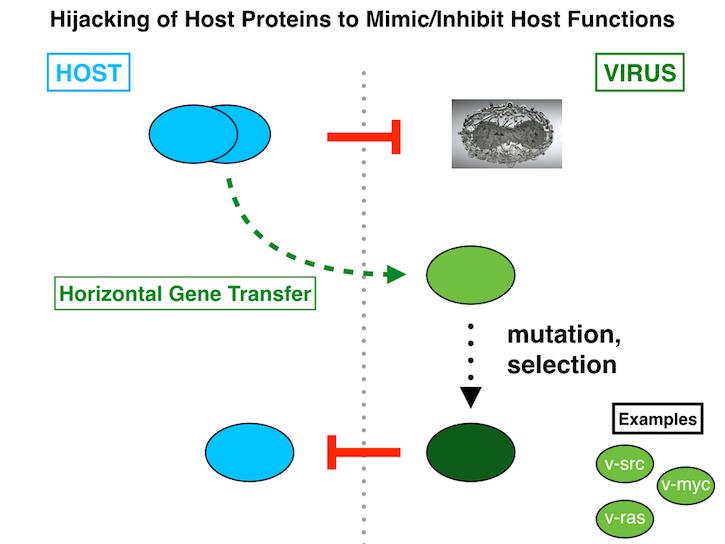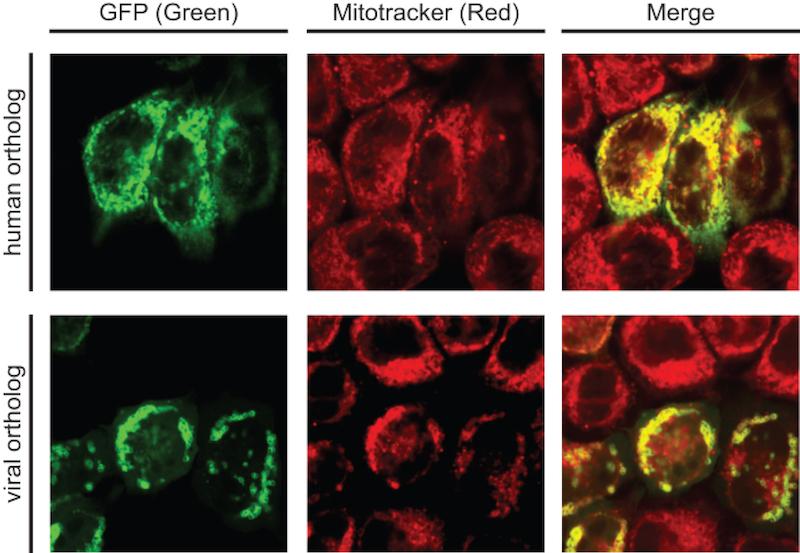It has been known for some time that viruses “steal” host genes as an adaptive strategy to mimic host functions. These stolen genes are acquired by a process referred to as horizontal gene transfer (HGT). One of the more famous examples is v-src from the Rous sarcoma virus, which led to the discovery of one of the first cellular oncogenes, src.
Our research is exploiting the phenomenon of HGT as a means to identify viral proteins vital to rewire cells and cellular functions during infection. By looking at viral genomes, we can identify which cellular and viral genes are “on the field” during different types of infections. In addition, because these viral proteins have host orthologs, we can use both gene copies as tools to dissect biology. Specifically, sequence divergence between the viral orthologs and their host counterparts can guide the identification of critical sequences needed for cellular function.
Overall, viral genome analysis not only provides a powerful means to learn about infection and how host cells defend against invading pathogens but as a way to deepen our understanding of the cell.
 Figure 3
Figure 3 Figure 3 shows mimicry of host protein function is a major adaptive strategy used by viruses. A host sequence encoding a protein (blue) is “stolen” by a virus (light green). As mutations occur, variants of the stolen sequence/protein (dark green) which improve viral fitness are selected; such variants might promote the ability of the viral ortholog to mimic and/or inhibit host ortholog function. Many instances of viral copies of host genes have been reported including v-src, v-myc, and v-ras. A host sequence encoding a protein (blue) is “stolen” by a virus (light green). As mutations occur, variants of the stolen sequence/protein (dark green), which improve viral fitness due to the ability to mimic and/or inhibit host ortholog function, are selected. Many instances of viral copies of host genes have been reported including v-src, v-myc, and v-ras.
 Figure 4
Figure 4 Figure 4 shows viral orthologs as tools to uncover cellular genes and their functions. Confocal image of a human protein we are interested in and its viral ortholog– both fused to GFP and expressed in HeLa cells.